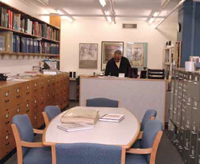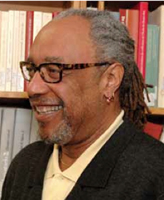
The Ambrosiana Collection, housed in the Medieval Institute at the University of Notre Dame’s College of Arts and Letters, was created through an agreement between His Eminence Giovanni Battista Montini, then the cardinal–archbishop of Milan (later Pope Paul VI) and President Rev. Theodore M. Hesburgh, C.S.C. The collection includes microfilms and photographic copies of nearly all of the drawings in the Biblioteca Ambrosiana, Milan, Italy’s historic library founded in 1609.
In addition, the Frank M. Folsom Microfilm and Photographic collection includes photographs and negatives of more than 10,000 medieval and Renaissance manuscripts from the Ambrosiana Library, together with 50,000 photographs and 15,000 color slides of miniatures, illuminated letters and Old Master drawings.

An Associate Professor in Notre Dame’s Department of Art, Art History, and Design, Robert R. Coleman has spent most of his career cataloging the 8,323 drawings and prints in the Ambrosiana’s collections, working from photographs and microfilm and traveling to Milan once a year to look at the originals. The catalog database is searchable, and online at medieval.nd.edu.
How long has he been working on the project?
“Since 1982,” he says. “Forever.” Of the prospect of the project all those years ago—cataloging and inventorying more than 8,000 drawings—he recalls, “It was terrifying. I hadn’t finished my Ph.D.”

Coleman’s academic specialty is Italian art from the sixteenth through eighteenth centuries, and he has worked extensively on Italian Old Master drawings, including those in the Snite Museum of Art. He was a contibuting essayist to the book, A Corpus of Drawings in Midwestern Collections: Sixteenth-Century Italian Drawings. A monograph, The Ambrosiana Albums of Giambettino Cignaroli (1706-1770): A Critical Catalogue, was published in 2011.
There’s still plenty of work to be done, says Coleman. A forthcoming book will be published by the University of Notre Dame Press. He continues to teach seminars on Italian drawings, using the collections of the Snite Museum.
“The Medieval Institute is a unique place for scholars to do research and study. This archive permits people to do initial research before going to Milan—whether studying manuscripts or drawings. Almost everything needed for a scholar to begin work on Italian drawings is right here.”
Today, nearly 30 years after he began, the catalogue and inventory is nearing completion. Recently, he says, “I found three more I missed. I won’t be traveling to Milan as much as I used to.”


